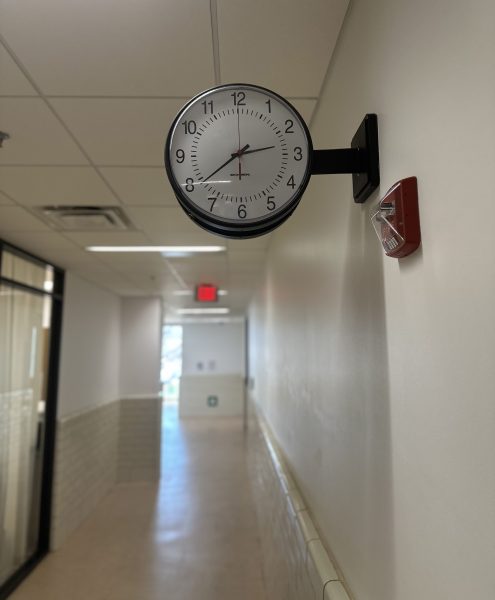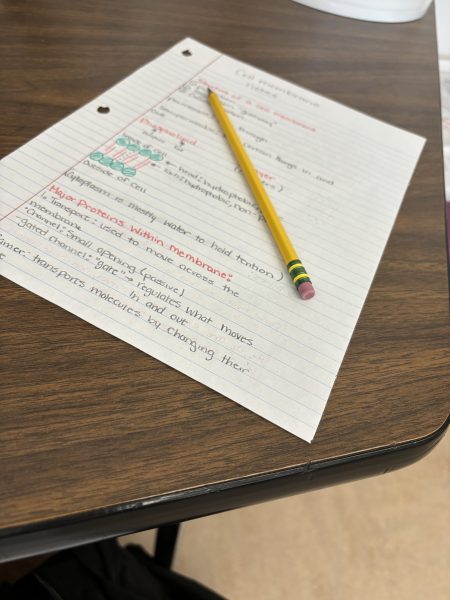CON
September 27, 2021
Masks are back once again. On August 12, a new Public Health Order for Virginia was put in place, requiring K-12 schools to participate in universal masking. There has been much dispute over the science behind masks. In my view, not only are masks inefficient in preventing viral transmissions, but there are also many negative physiological and psychological effects as well.
Throughout the pandemic, we have received mixed messages on how we can slow the spread of COVID-19 from politicians and government health officials. In March of 2020, Dr. Anthony Fauci had some interesting things to say while on a “60 Minutes” Interview.
“There’s no reason to be walking around with a mask,” Fauci said. “When you’re in the middle of an outbreak, wearing a mask might make people feel a little bit better and it might even block a droplet, but it’s not providing the perfect protection that people think that it is.”
Fauci completely shifted gears a few days later after the Centers for Disease Control (CDC) recommended face masks be worn in public. A previous study from the CDC in May 2020 showed no significant reduction in transmissions of influenza while wearing face masks. Since flu droplet and aerosol sizes are about the same size as those of COVID, masks can’t work to reduce transmissions. However, this is not the only time Fauci and the CDC changed ideas. In January of 2021 on the “Today” show, Fauci went to the extreme to say that wearing multiple masks makes “common sense,” when reducing transmissions.
In a Danish study conducted in March 2021, 3030 people were randomly assigned to wear masks outside their homes for a month, and 2994 people were assigned to a control (maskless) group; 4862 people completed the study. The results show that 42 participants in the mask group (1.8 percent) and 53 participants in the control group (2.1 percent) were infected with SARS-CoV-2 (the virus causing COVID-19). There is a mere 0.3 percent difference between the two groups.
An article from Dr. Denis G. Rancourt, Ph.D., stated that “indoor airborne virus concentrations have been shown to exist (in day-care facilities, health centers and on-board airplanes) primarily as aerosol particles of diameters smaller than 2.5 [micrometer] μm.” These aerosols are smaller and harder to stop than the larger droplets that fall quicker due to gravity. Unlike larger droplets, aerosol particles can travel further distances than six feet and can remain in the air for hours, or even days.
Rancourt states that the 50 percent probability minimal infectious dose (TCID50), which is the lowest concentration of viruses that can still infect cells, has been found to primarily occur in the 100-1000 individual viruses range. To visualize how small this quantity of viruses is, there are usually between 1000-10000000 viruses in a single aerosolized influenza droplet with a diameter between 1μm – 10μm, which can best be prevented with a strong and healthy immune system. Many surgical and cloth masks don’t even do a good job at stopping drywall particles, which are about 3 micrometers – 10 micrometers in size. If what Rancourt says is true, then that would mean that less virus does not necessarily mean less illness.
Since respiratory diseases like COVID and influenza can infect animal and human reservoirs, it will be impossible to eradicate the disease. Smallpox and polio, however, were able to be neutralized since the viruses could only infect human reservoirs.
Masks can also have negative effects on the immune system. Lysosomes, an organelle present in animal cells, play an essential role in the immune system and in destroying viruses and other pathogens. A medRxiv manuscript of a University of Louisville study states that “prolonged mask use (>4 hours per day) promotes facial alkalinization and inadvertently encourages dehydration, which in turn can enhance barrier breakdown and bacterial infection risk.”
A decrease of oxygen, which prohibits pathogen elimination, and an increase in CO2 levels, causing acne growth, nausea and headaches, in the tissue are the primary causes for facial alkalinization. Hypoxia, a condition where the oxygen levels in the blood is far below normal, can become a long term effect from the masks and the CO2 buildup. Other negative effects that can be associated with masks include increased lactate concentration, self-contamination, increased muscle tension, insomnia, fatigue and anxiety.
I am not saying anyone is right or wrong here, I bring this up because I want to make people aware that there are plenty of contradictory studies and data that has not been addressed within our government. I respect the opinions that others have on this matter, and I think everyone should do the same. What I don’t like is that the government had to tell everyone to wear a mask, despite the conclusions from scientific research not being unanimous. I believe that, based on this research, masks are unnecessary and should be made optional.
















